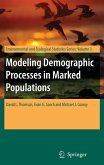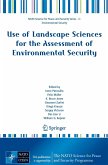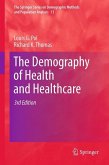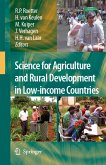Demography can be considered the key to understanding much of biology. It is the demographic processes of birth and death which govern the spread of populations through environmentsand the spread of genes through populations. An understa- ing of demographycan yield not only an understanding of population size and p- ulation change, it can help us to understand the form and function of life histories; whenorganismsmature,whentheybreed,and whentheydie. Demographicinsights allow us to see how populations function, how they interact with their changing environment, and how they adapt. The analysis of demographic processes in free-living organisms is however no simple task and involves considerable challenges in observation and analysis. Some 20yearsago,therewasaconcertedefforttopromoteinter-disciplinarycollaboration between biologists and statisticians to address these challenges and thereby to f- ther our understanding of demographic processes in natural populations. Although many diverse organisms can be studied in the wild, birds have proved particularly amenable with large numbers being marked and followed by large networks of - servers. Itwas nocoincidencethenthatthe EuropeanUnionforBird Ringing(EUR- ING) played a leading role in these initiatives, teaming up in the mid-1980swith the Mathematical Ecology Group of the Biometric Society, and the British Ecological Society, to bring together experts from diverse ?elds to address the challenges in hand. Twenty years on, progresshas been considerable and we now have signi?cant insights into demographic processes thanks to the wide range of quantitative tools and systematically collected datasets which have been built up over this period.
Much of biology can be understood in terms of demography. It is the demographic processes of birth and death which govern rates of population growth and the rates at which gene frequencies change. The analysis of demographic processes in free-living organisms is, however, far from simple. Scientists from diverse fields in biology and statistics have united to address the challenges by developing mark-recapture methods and other approaches. Progress has been rapid, and this volume represents a snapshot of the emerging field. It has eleven sections in total, covering the most important biological and statistical frontiers, new software developments, and an open forum. It covers the latest approaches in modeling population dynamics, evolutionary ecology and wildlife biology. It addresses issues in the estimation of abundance and movement, and it covers new statistical approaches in the combination of information, Bayesian statistics, Robust Designs and the modeling of state-uncertainty.
Much of biology can be understood in terms of demography. It is the demographic processes of birth and death which govern rates of population growth and the rates at which gene frequencies change. The analysis of demographic processes in free-living organisms is, however, far from simple. Scientists from diverse fields in biology and statistics have united to address the challenges by developing mark-recapture methods and other approaches. Progress has been rapid, and this volume represents a snapshot of the emerging field. It has eleven sections in total, covering the most important biological and statistical frontiers, new software developments, and an open forum. It covers the latest approaches in modeling population dynamics, evolutionary ecology and wildlife biology. It addresses issues in the estimation of abundance and movement, and it covers new statistical approaches in the combination of information, Bayesian statistics, Robust Designs and the modeling of state-uncertainty.








